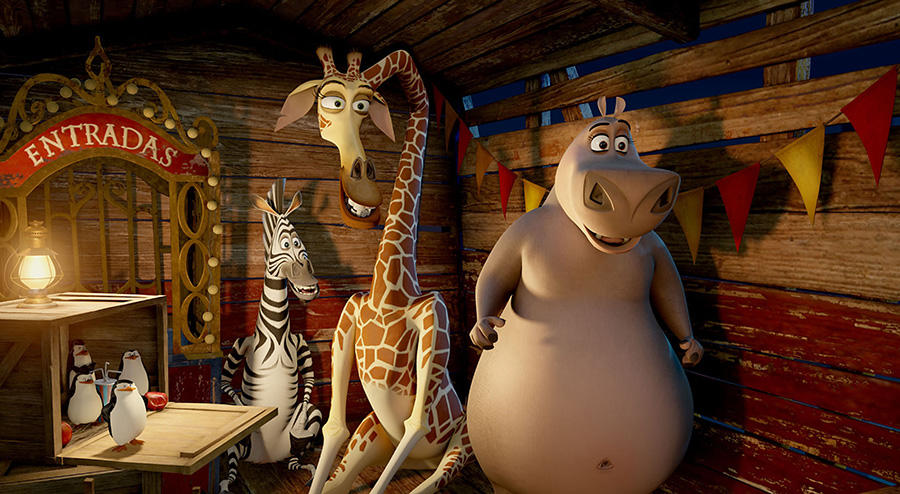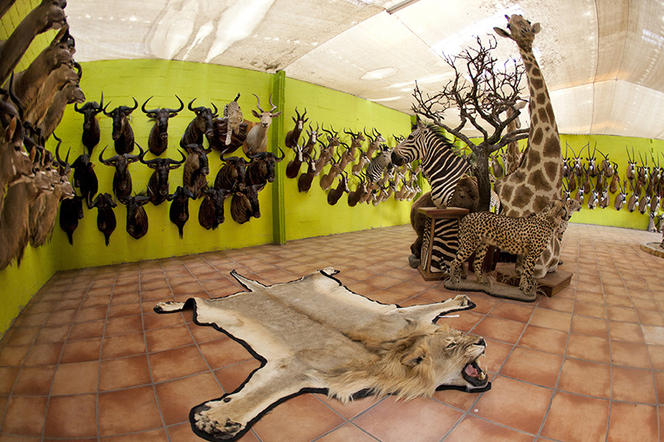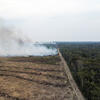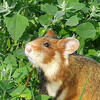You are here
Animal Extinction Hidden in Plain Sight

You have just published a study in Plos Biology1 which explains that contrary to popular belief, the most iconic species of wild animals, those considered the most charismatic—lions, tigers, elephants and others—are not necessarily benefitting from increased conservation efforts and remain under enormous threat, something which the general public often ignores. In your view, one explanation could be that these animals are overrepresented in our daily lives—in cultural products, advertising, and so on. These “virtual” populations may hide the highly precarious situation of these species. How did this study come about?
Franck Courchamp:2 I started working on this six years ago, in parallel to main area of research, which focuses on invasive species and climate change. I was struck by the oft-repeated mantra that charismatic wild species were extremely privileged in terms of conservation biology, to the detriment of other species. I began wondering what truth there was in this assertion, but before embarking on my study, I had to determine precisely what these charismatic species were, at least in the mind of Westerners. To obtain this list, I carried out four parallel studies based on different samples.
What type of studies were they?
F. C.: The first comprised a multilingual website (in French, English, Spanish and Italian) on which internet users were asked the question directly. Within a very short time, we had received almost 5000 answers, which is an excellent result for this type of study; often, you end up with a sample consisting of only a few dozen or a few hundred people. We supplemented this work with similar questionnaires completed by 10-year-old schoolchildren in Spain, England and France. Next, we added two further approaches. The first involved drawing up a list of all the wild animals found on the posters of all the animation films by Disney, Pixar and DreamWorks, as well as all animals on the homepage of the websites of zoos in the world's 100 major cities. In both cases, the initial idea was that these species would be selected because they were the most charismatic. The results of all four studies were in fact practically identical.
Were there differences according to geographic area?
F. C.: Indeed, we noted a number of fairly interesting variations, which we will be looking to publish later. For instance, the Spanish are very fond of the Iberian lynx and wild bulls, while the English prefer dangerous animals, such as tiger sharks and anacondas. I think this could be a reflection of the strong presence of these animals in films produced by the BBC, such as the famous Richard Attenborough documentaries. Another interesting point is that children were far more imaginative than adults and came up with many more species.
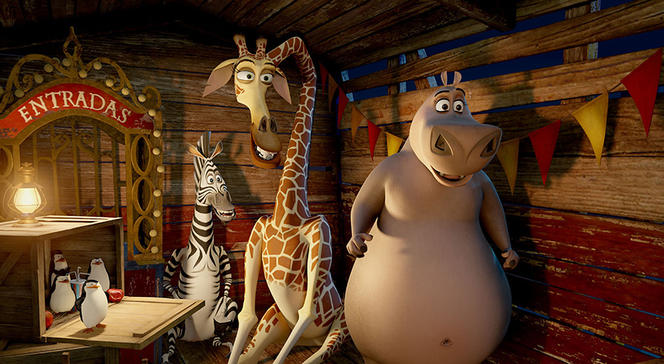
Looking at this final list of charismatic wild species—in order: tigers, lions, elephants, giraffes, leopards, pandas, cheetahs, polar bears, wolves and gorillas—it is surprising to find the gray wolf…
F. C.: I was indeed quite surprised by this myself, since as well as being the only non-exotic species in the list, wolves are not the most endangered. Although a third of their habitat has been reduced and they have been decimated in several countries, unlike the nine other species, they are not in imminent danger of extinction. Historically, wolves have also been—and continue to be—persecuted worldwide, so it is extremely surprising that they should also be considered among the most charismatic animals.
Finally, what surprised you most is that the general public is not always aware that these species are endangered or on the brink of extinction…
F. C.: At first, this list appeared to me to be so obvious that I didn’t find it to be of very much interest. But talking to people around me I realized just how many people were practically oblivious to the real problems facing these species. On our initial website, there was a second page asking users to classify these species according to 6 characteristics: dangerous, cute, magnificent, and so on. One of these characteristics was “endangered,” and one out of every two visitors got a wrong answer. When I was at UCLA3 three years ago, I also interviewed a hundred or so students from several disciplines about this list and about the current status of these species. I was thus able to quantify the degree of misconception about each species.
The precarious situation of pandas, polar bears and tigers were the most well-known, since there have been numerous information campaigns about them. For other species, such as giraffes, however, the results were more surprising. The general public appeared unaware that giraffes are on the verge of extinction, that the Massai giraffe species has fallen 97% in recent years, which is tantamount to genocide with regard to a species and its gene pool. The general public was also unaware of the fact that lions could also disappear within 20 years if nothing is done. I found this result extremely revealing, particularly for species that are the darlings of the general public. If we cannot save the lion, the king of animals and the emblematic species found on every coat of arms, every flag and every sports logo, what hope is there of saving a species of butterfly deep in the tropical forests of South America that no one has ever seen?
The hypothesis advanced in your study to account for this gulf between reality and people’s perception is that these charismatic species are in fact overrepresented in our daily lives.
F. C.: Exactly. The fact that we are surrounded by images of these species prevents us from realizing just how rare they are in reality. Our perception of them is biased. The example of the giraffe in France is striking. Each year, the number of “Sophie la Girafe” baby products sold in France is higher than the number of babies born (over 700 000 in 2016) and this number is obviously far higher than the number of real giraffes on the planet. We asked 48 French volunteers to record the number of times they saw images of one of these species in their daily life over the course of one week. On average, they reported seeing 31 in a single day.

And in the US, you noted that these 10 charismatic species account for 48% of all cuddly toys sold on Amazon each year. The second part of your study, however, which is in practice the most important, concerns the actual condition of these species across the planet. And here, the global population figures mask a fragility that is often poorly understood.
F. C.: This part of the study also took a great deal of time. We had to determine the number of regions constituting the habitat of each population as well as past and present population sizes and trends. To take tigers for example, there are 3500 of these animals in the wild worldwide. We might thus imagine that this is a significant population. However, if we subtract from this number those animals either too old or too young to reproduce—since what is important is the population potential—it is currently thought that there are only around 1000 female tigers able to reproduce. Moreover, this number does not describe a single population, but many small populations completely isolated within small pockets. There are only some 40 groups, each with fewer than 100 individuals, which is in fact extremely small for any chance of long-term survival. For all of these species, if we consider these two elements—reproduction and fragmentation of the population—our perception shifts. One such species has recently been in the headlines, the last northern white rhinoceros male. He had been unable to reproduce for a long time, and the last two extant specimens —two females—were in fact his offspring. This clearly shows that the survival of the population is by no means guaranteed by the continued existence of a few individuals.
A United Nations report cited in your study indicates that these species are often endangered as a result of hunting.
F. C.: This is true, and it is quite surprising, since it is in fact the very species we prefer that we tend to kill. The great apes for instance, which are hunted for food, are not disappearing simply due to the destruction of their habitat. For lions, the problem is trophy hunting and persecution, while wild elephants are slaughtered for their tusks, wolves are killed in order to protect flocks of sheep, and tigers are slain to prepare traditional medicines. There is something paradoxical and cynical in all this.
According to your findings, what will be the next species to disappear?
F. C.: A number of studies have shown that within the coming 20 to 30 years, wild tigers and lions will have vanished from the face of the Earth. Elephants have another 50 years or so left, as do polar bears. It is obviously very difficult to make accurate predictions, but we are talking about decades. If nothing is done, the majority of these species will have ceased to exist in the wild during the lifetime of most of the people reading this interview, which in geological terms is the blink of an eye.
In this publication, you launch two appeals, the first is that more studies on these species should be conducted globally.
F. C.: Indeed. The fact is that we now have a better idea about the number of stars in the sky than about the number of species here on earth, and we know more about the surface of the moon than about the bottom of our oceans—and I say this as an enthusiastic astronomy amateur myself. Yet we lack substantial investment to preserve the greatest riches that we have on this planet. The problem is not that researchers are not interested in this problem but that there is a shortage of researchers in the fields of conservation and ecology. There are many students, but very few open positions and very little funding for research projects, and there is very little possibility of interaction with sources of private funding. For this reason, a compensation mechanism could help fund the conservation of these emblematic species.
We will conclude with this, your second appeal, for a mechanism that would help fund species conservation based on the use of their images, such as “lion image rights” for example.
F. C.: If a company makes profit on images of tigers or lions for example, it is only natural that part of this profit—a ridiculously small amount such as one tenth of a percent for instance—should go towards information campaigns aiming to overturn the “ill” being done by promoting the perception that lions are abundant and not threatened, or simply towards funding for the preservation of lions. For these companies, this notion is not even too far removed from their own marketing culture, since they pay copyright fees for every image they use.
While the financial impact would be negligible for a company using images of an endangered species, it would make an enormous difference in terms of efforts to conserve the species. Moreover, these companies have everything to gain: if they were to be perceived as the benefactors responsible for the preservation of the species that epitomize them, they would be sending out a very strong and positive message to their customers. Conversely, if they allowed their emblem to disappear, they would be left with nothing, proudly displaying the logo of an extinct species…
- 1. F. Courchamp et al., "The paradoxical extinction of the most charismatic animals," PLOS Biology, 2018. https://doi.org/10.1371/journal.pbio.2003997
- 2. Laboratoire Écologie, systématique et évolution (CNRS/Université Paris-Sud/AgroParisTech).
- 3. University of California, Los Angeles.



